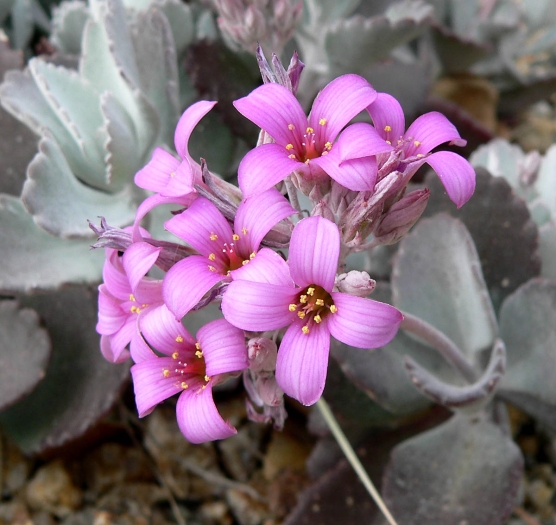Flower Dust Plant
(Kalanchoe pumila)
Flower Dust Plant (Kalanchoe pumila)
/
/

Stan Shebs
CC BY-SA 3.0
Image By:
Stan Shebs
Recorded By:
Copyright:
CC BY-SA 3.0
Copyright Notice:
Photo by: Stan Shebs | License Type: CC BY-SA 3.0 | License URL: https://creativecommons.org/licenses/by-sa/3.0 | Uploader: Stan Shebs | Publisher: Wikimedia Commons | Title: Kalanchoe_pumila_4.jpg | Notes: {{Information |Description=Lakes Trail (Mazama Ridge), [[Mount Rainier National Park]] |Source={{Own}} |Date=[[:en:ISO_8601|2008:08:11]] |Author=[[User:Wsiegmund|Walter Siegmund]] [[User talk:Wsiegmund|(talk)]] |Permission=Own work, attribution required |













Estimated Native Range
Summary
Kalanchoe pumila, commonly known as Flower Dust Plant, is a dwarf succulent subshrub in the Crassulaceae family, native to rocky outcrops and shrubland in Madagascar. It typically grows to 20 cm (8 in) tall and 45 cm (18 in) wide, featuring arching stems with frosted, silvery leaves and clusters of small, pink flowers with purple veining that bloom in spring. The flowers are quite showy and attract pollinators. This plant is particularly noted for its attractive foliage and compact growth habit.
Flower Dust Plant is valued for its ornamental qualities, including its dusty appearance and vibrant blooms. It is often used in container gardens, rockeries, and as a houseplant in temperate regions due to its minimum temperature requirement of 12 °C (54 °F). It thrives in full sun to part shade, requiring low water once established and well-draining soil. It is relatively easy to maintain, making it suitable for gardeners of all skill levels. The Royal Horticultural Society has recognized it with the Award of Garden Merit, indicating its excellence for home garden use. While generally pest-resistant, mealybugs and scale insects can sometimes be a problem. Overwatering can lead to root rot, so careful watering is essential.CC BY-SA 4.0
Flower Dust Plant is valued for its ornamental qualities, including its dusty appearance and vibrant blooms. It is often used in container gardens, rockeries, and as a houseplant in temperate regions due to its minimum temperature requirement of 12 °C (54 °F). It thrives in full sun to part shade, requiring low water once established and well-draining soil. It is relatively easy to maintain, making it suitable for gardeners of all skill levels. The Royal Horticultural Society has recognized it with the Award of Garden Merit, indicating its excellence for home garden use. While generally pest-resistant, mealybugs and scale insects can sometimes be a problem. Overwatering can lead to root rot, so careful watering is essential.CC BY-SA 4.0
Plant Description
- Plant Type: Succulent, Subshrub
- Height: 0.7-1 feet
- Width: 1-2 feet
- Growth Rate: Slow
- Flower Color: Pink, Purple
- Flowering Season: Winter, Spring
- Leaf Retention: Evergreen
Growth Requirements
- Sun: Full Sun, Part Shade
- Water: Low
- Drainage: Medium
Common Uses
Bee Garden, Bird Garden, Border Plant, Butterfly Garden, Drought Tolerant, Fire Resistant, Groundcover, Hummingbird Garden, Low Maintenance, Potted Plant, Rock Garden, Salt Tolerant, Showy Flowers, Street Planting
Natural Habitat
Native to rocky outcrops and shrubland in Madagascar
Other Names
Common Names: Rosenkalankoe
Scientific Names: , Kalanchoe pumila, Kalanchoe multiceps, Kalanchoe brevicaulis, Kalanchoe pumila f. venustior,
GBIF Accepted Name: Kalanchoe pumila Baker